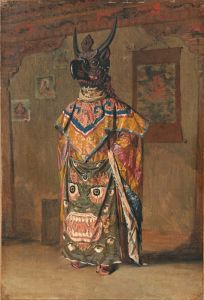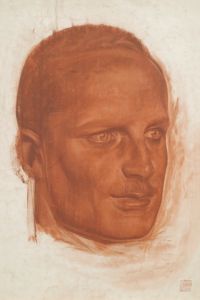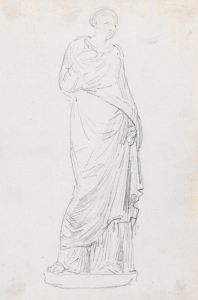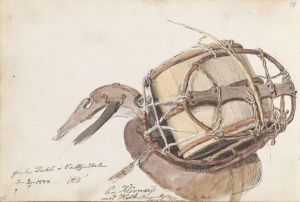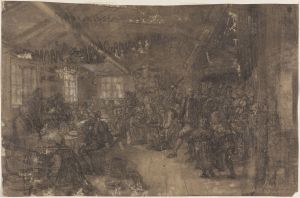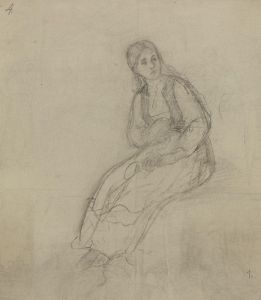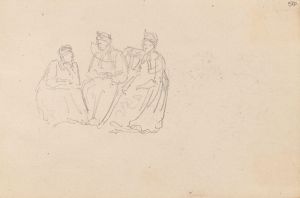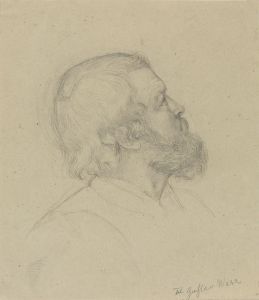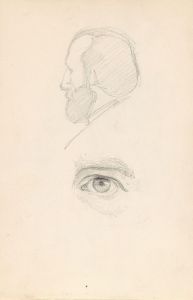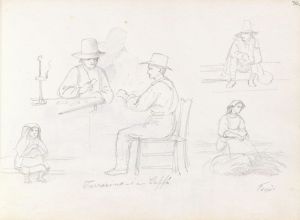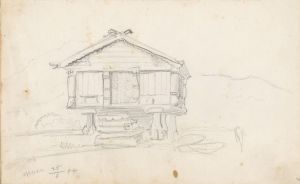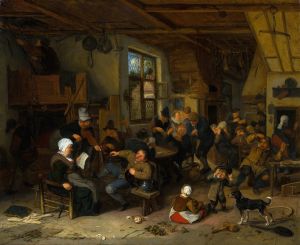
To stående kvinner
A hand-painted replica of Adolph Tidemand’s masterpiece To stående kvinner, meticulously crafted by professional artists to capture the true essence of the original. Each piece is created with museum-quality canvas and rare mineral pigments, carefully painted by experienced artists with delicate brushstrokes and rich, layered colors to perfectly recreate the texture of the original artwork. Unlike machine-printed reproductions, this hand-painted version brings the painting to life, infused with the artist’s emotions and skill in every stroke. Whether for personal collection or home decoration, it instantly elevates the artistic atmosphere of any space.
Adolph Tidemand was a prominent Norwegian painter in the 19th century, known for his detailed and evocative depictions of Norwegian folk life and traditions. One of his notable works is "To stående kvinner," which translates to "Two Standing Women." This painting is a significant example of Tidemand's focus on capturing the essence of rural Norwegian culture during a period of national romanticism.
Adolph Tidemand was born on August 14, 1814, in Mandal, Norway. He studied at the Academy of Fine Arts in Copenhagen and later at the Kunstakademie Düsseldorf, which was a hub for many artists of the time. Tidemand became a central figure in the Düsseldorf school of painting, which emphasized detailed realism and often focused on historical and genre scenes.
"To stående kvinner" is a testament to Tidemand's dedication to portraying the everyday lives of Norwegian people. The painting features two women standing, dressed in traditional Norwegian folk costumes. These costumes are intricately detailed, showcasing Tidemand's skill in rendering textiles and patterns, which was a hallmark of his work. The women's attire reflects the regional styles of Norway, which Tidemand often highlighted in his paintings to emphasize the diversity and richness of Norwegian cultural heritage.
The setting of the painting is typical of Tidemand's work, often depicting rural or pastoral scenes that convey a sense of simplicity and authenticity. The background is usually understated, allowing the focus to remain on the figures and their attire. This approach helps to underscore the cultural significance of the subjects and their connection to Norwegian identity.
Tidemand's work, including "To stående kvinner," played a crucial role in the national romantic movement in Norway. This movement sought to foster a sense of national pride and identity through the arts by celebrating Norway's history, landscapes, and cultural traditions. By focusing on rural life and traditional costumes, Tidemand's paintings contributed to a growing appreciation for Norway's cultural heritage during a time when the country was seeking to assert its identity, having gained independence from Denmark in 1814 and entering a union with Sweden.
Throughout his career, Tidemand collaborated with other artists, most notably Hans Gude, with whom he created several famous works, including "Bridal Procession on the Hardangerfjord." While "To stående kvinner" is not a collaborative piece, it shares the same ethos of celebrating Norwegian life and traditions.
Adolph Tidemand's legacy is significant in the context of Norwegian art history. His works are housed in several important collections, including the National Gallery in Oslo, which holds many of his paintings. "To stående kvinner" remains an important piece for its representation of Norwegian cultural identity and its contribution to the national romantic movement.
In summary, "To stående kvinner" by Adolph Tidemand is a painting that exemplifies the artist's dedication to portraying Norwegian folk life with authenticity and respect. Through his detailed depiction of traditional costumes and rural settings, Tidemand's work continues to be celebrated for its role in shaping and preserving Norwegian cultural heritage.





